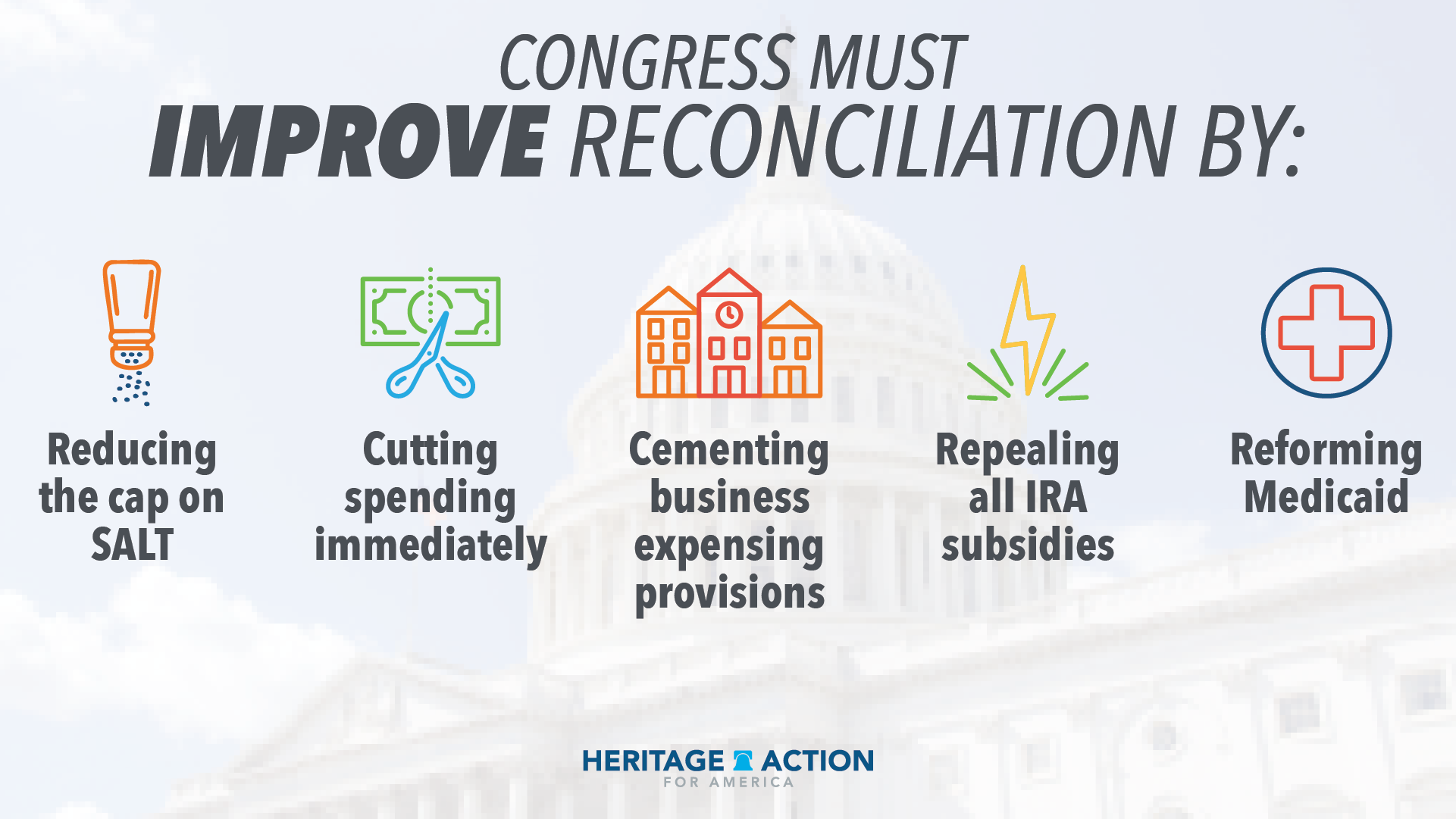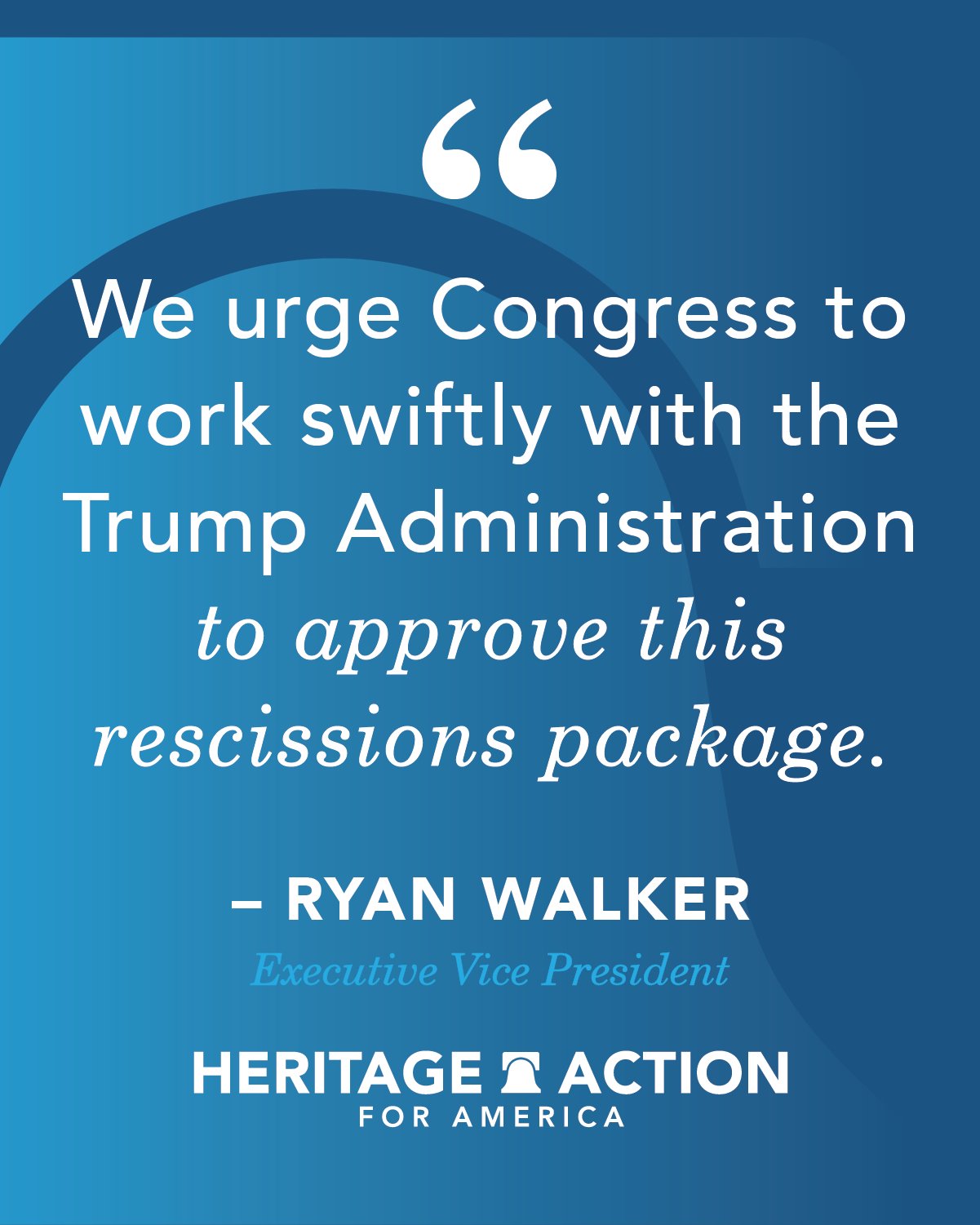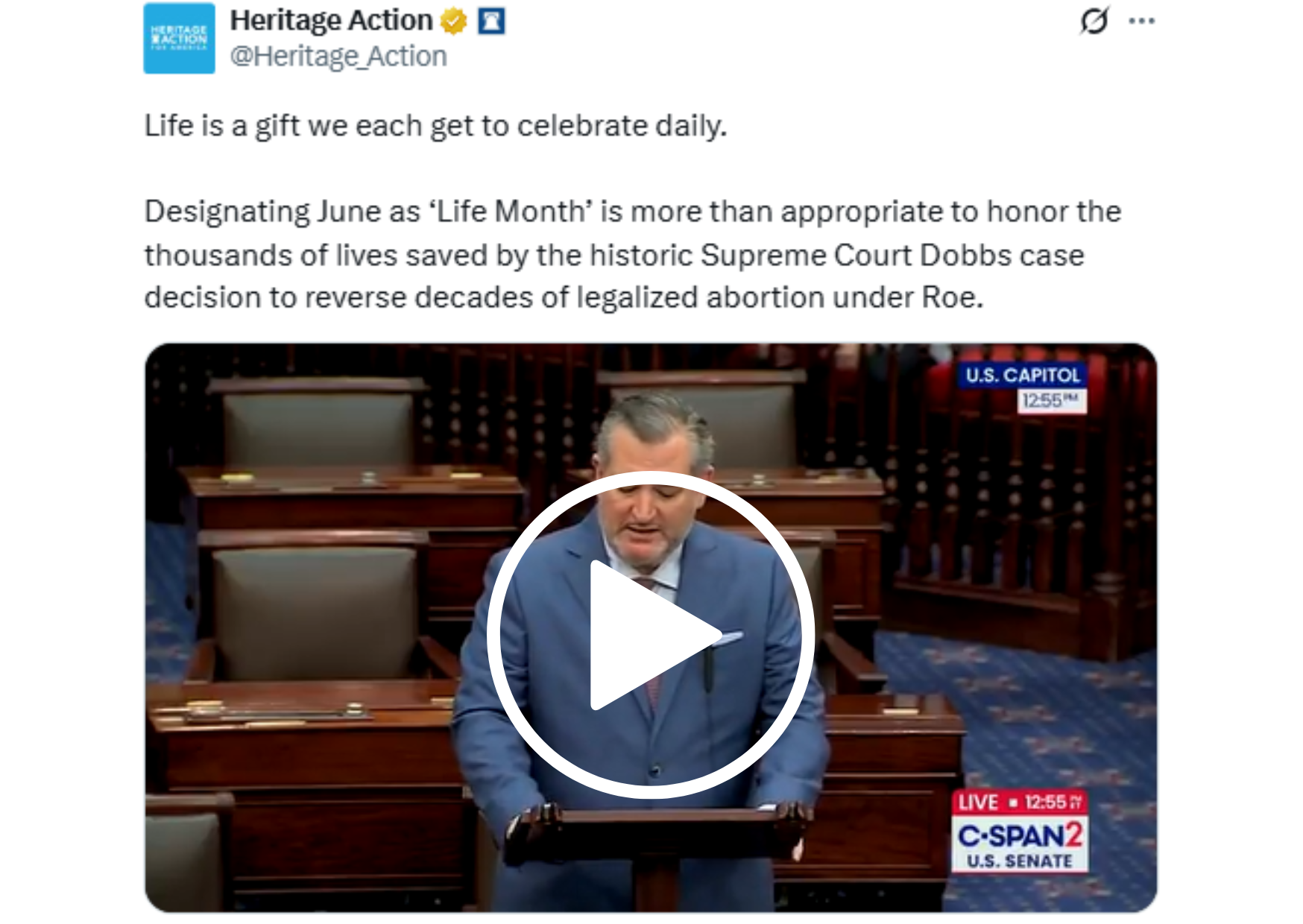The grassroots will play a crucial role in ensuring we meet this moment. Check out the updated toolkit HERE and help us deliver a strong message to the Senate! Your voice can make all the difference. It’s time to rewrite the status-quo in Washington.
Budget Reconciliation - Claims vs Reality:
Heritage Action supports the House-passed bill, and encourages the Senate to make key improvements to make the bill even stronger, such as repealing all of the Inflation Reduction Act subsidies immediately and making the business expensing provisions permanent. At the same time, there are plenty of claims being made about the bill — some of these are true, some are false, but many are somewhere in between. Here’s a breakdown of the arguments we’ve seen most often:
Claim #1: House Republicans purposely left DOGE cuts out of the bill.
Reality: Most DOGE cuts are ineligible to pass under this reconciliation process.
Federal spending is split into two categories: mandatory spending and discretionary spending. Mandatory spending (such as Medicaid) does not need to be passed each year during the regular appropriations process. Meanwhile, discretionary spending is determined by Congress through the twelve annual appropriations bills, which fund many of the programs that codifying DOGE cuts would reform.
Claim #2: The bill allows blue states to continue their wasteful spending habits.
Reality: The bill contains a massive increase in the SALT deduction that should be reversed.
The bill contains a $40,000 cap on the State and Local Tax (SALT) deduction — four times the current deduction. If this provision is kept, it will allow states like New York and California to continue taxing their citizens at exorbitant rates to pay for left wing priorities. Although it is only one part of the bill, it is a serious concern. If this provision is stripped, Republicans will have well over $300 billion worth of additional savings, which could be used to pay for permanently extending pro-small business expensing provisions and other important reforms..
Claim #3: Most of the budget cuts will never come to fruition.
Reality: Progress has been made by conservatives looking for immediate cuts, but some programs are still slated to be phased out instead.
The unfortunate reality is that the Washington establishment does not want budget cuts. The longer the phaseout is, the more likely that it will never end. The same applies to reforms to Medicaid and SNAP and is why we must make the most important budget cuts (such as a full and immediate repeal of the Inflation Reduction Act) a top priority. As part of the negotiations between hardline conservatives and Speaker Johnson, real progress was made on this front, however, there remains work to be done. Some Republicans have been pushing for a delay to the cuts until 2029, but conservatives see this as merely allowing Washington to avoid the cuts altogether.
Claim #4: The bill adds trillions of dollars to the debt.
Reality: A matter of perspective, but we lean towards the side that believes it doesn’t.
This one is tricky — on one hand, some budget analysts argue that because the 2017 tax cuts are set to expire in 2027, any new extension should be classified as “spending” for accounting purposes. On the other hand, other analysts would argue that the 2017 tax cuts were never intended to expire, and the deadline only exists as a formality. Therefore, you can’t lose tax revenue that never existed in the first place.
Furthermore, the bill raises the debt ceiling, as America will hit the debt limit in a few months. Including the debt ceiling raise now allows Republicans to block Democrats from attempting to use the debt ceiling as leverage later for their agenda – as it would be subject to the Senate filibuster.
Claim #5: The Byrd Rule will inevitably lead to the bill being gutted by the Senate.
Reality: The Senate’s “Byrd Rule” will likely necessitate some changes to the bill. The House attempted to craft the text to comply with it, so it remains to be seen to what degree the Senate alters the bill.
A provision violates the Byrd Rule if it falls under one or more of the following six definitions:
-
It does not produce a change in outlays or revenues.
-
It produces an outlay increase or revenue decrease when the instructed committee is not in compliance with its instructions.
-
It is outside of the jurisdiction of the committee that submitted the title or provision for inclusion in the reconciliation measure.
-
It produces a change in outlays or revenues which is merely incidental to the non-budgetary components of the provision.
-
It would increase the deficit for a fiscal year beyond the “budget window” covered by the reconciliation measure.
-
It recommends changes in Social Security.
.png)


